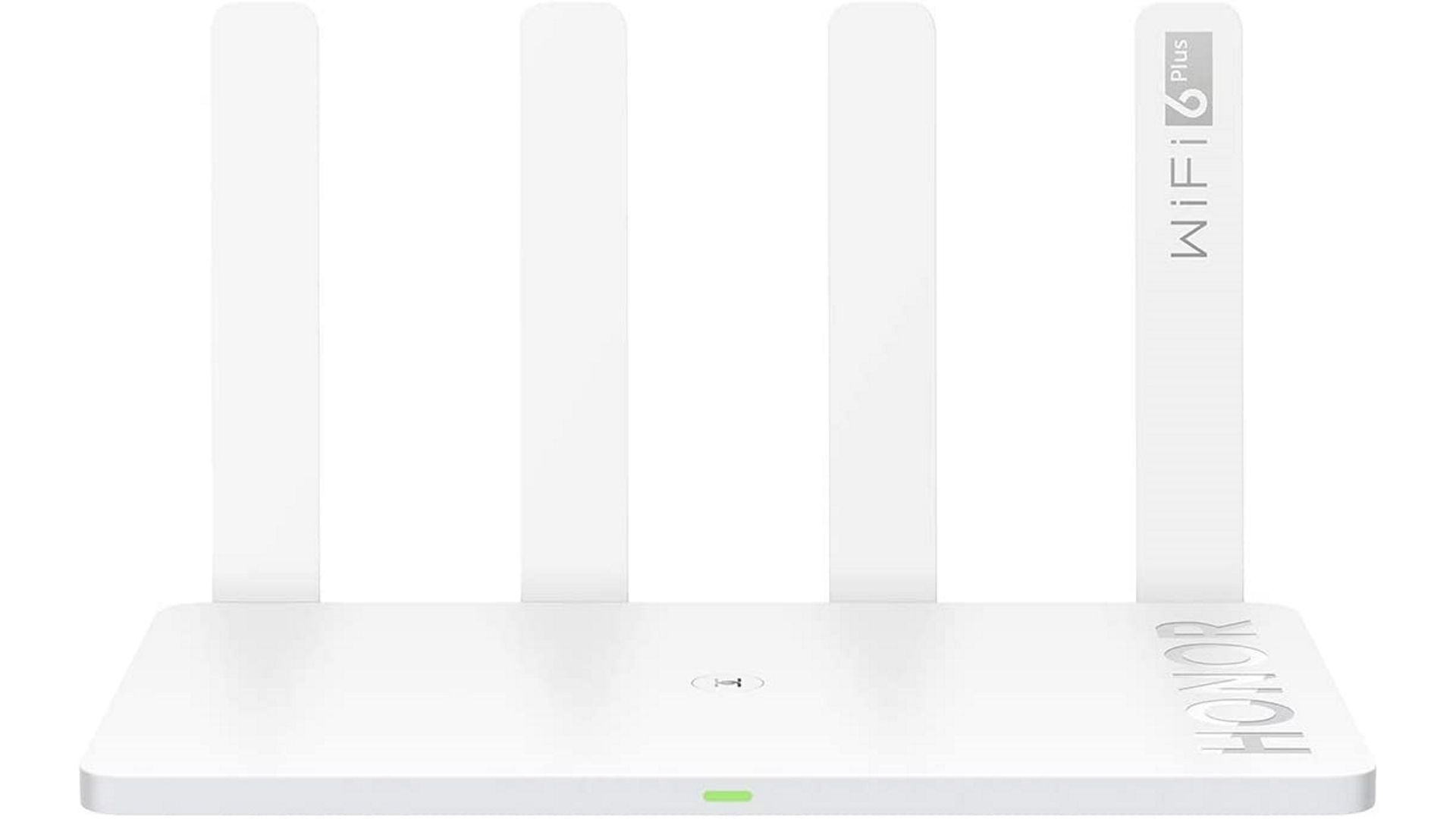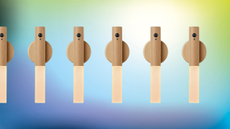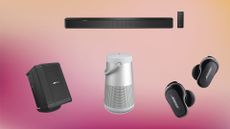Best Wi-Fi routers: the best ways to boost your browsing and speed up your surfing
Upgrade your home internet with the best Wi-Fi routers from Google, Netgear and more.


Mobile connectivity is king, and to ensure that your smartphone, laptop, or tablet isn't being held back, you need to ensure you've got the best WiFi router possible. If you're still using the standard box that your internet provider sent you, there's a good chance that you'll be able to get a significant speed boost by ditching it in favor of a newer and more advanced one.
The wireless world can be confusing, however, with a huge variety of choices and a range of different standards and connection types to try and get your head around. That's why we've assembled this range of different Wi-Fi routers to find the options that we think will suit you best. We've rated them based on connection speeds, signal strength, range, and coverage, as well as ease of use, visual design, and any extra features.
Read on to find out our thoughts and, for more on getting the finest speeds out of your internet, head over to our guide to the best Wi-Fi dongles.
The best Wi-Fi routers in 2024
Livingetc knows design.
Best router for smart home enthusiasts

1. Google Nest Wifi Mesh Router (AC2200)
Specifications
Reasons to buy
Reasons to avoid
Google’s unassuming little lozenge of Wi-Fi goodness also graces our roundup of the best mesh Wi-Fi systems. It works equally well as a standalone router, thanks to capable (if not outstanding) performance and a heap of smart software features that make managing your network an absolute breeze. One of our favorite features is the one that sends a notification to your phone if your network goes offline. Allowing you to address the problem immediately, this function makes the Nest one of the best routers, for sure.
These software integrations are particularly handy if you’re invested in Google’s Nest ecosystem of smart home devices already - although be warned that if you’re just buying the main hub as a standalone unit without any satellite nodes, you won’t get the smart speaker functionality built into those smaller hubs.
Best router for speedy connections

2. NETGEAR Nighthawk AX8 WiFi Router (RAX80)
Specifications
Reasons to buy
Reasons to avoid
You don’t necessarily need to spend vast sums of money to get good Wi-fi, but if only the very best will do, then you really do get what you pay for. Enter Netgear’s Nighthawk RAX80, a router whose blistering speed is matched only by its eye-watering price. On the other hand, however, you are getting a heap of advanced features for your cash and best-in-class performance.
We’re also rather taken by its design, which looks like a stealth bomber as designed by Apple’s Jony Ive. The large wings may make it rather conspicuous on a bookshelf, but it’s almost appealing enough to act as a conversation piece in and of itself.
Best router for cheap Wi-Fi 6 connections

3. HONOR Router 3
Specifications
Reasons to buy
Reasons to avoid
Honor may be best known for making affordable mid-range smartphones (if you’ve heard of the company at all), but it also makes other forms of technology, such as this delightfully affordable Wi-Fi 6 router. The simplistic, blocky design may have a somewhat Fisher Price-esque look to it, but don’t be fooled: the Honor Router 3 delivers where it counts.
The range is broad enough to cover an average-sized home comfortably, and the speeds are fast enough to support activities like 4K streaming or online gaming. It doesn’t lead the pack in any one technical area, and you won’t get a whole lot of extra features for your money - but when the price is this attractive, it’s hard to argue.
Best router for overall value

4. ASUS AX5400 Gaming Router (RT-AX82U)
Specifications
Reasons to buy
Reasons to avoid
Router manufacturers often have a tendency to over-design their products, and that’s certainly the case here; in stark contrast to the discreet Google Nest Wifi above, the blue LEDs and sharp angles of this machine look like they’d be more at home in an episode of Battlestar Galactica.
Look past the somewhat garish design, however, and you’ll find an outstanding router that combines phenomenal speed and range with a number of useful (albeit nonessential) software features. Best of all, while not quite as pocket-friendly as Honor’s Router 3, the Asus RT-AX82U is ridiculously good value considering the performance. If you can stomach the design, you won’t be disappointed.
Best all-round router

5. D-Link DIR-X1860 EXO AX1800 Router
Specifications
Reasons to buy
Reasons to avoid
Occupying something of a halfway-house between the flashy exuberance of top-end Wi-Fi 6 routers and comparatively understated examples like the Honor Router 3, D-Link’s DIR-X1860 nonetheless offers a happy medium across the board. At just over £100, it comes in at the lower end of the price range, but its speeds are sufficient to keep up with an average household’s demands - especially on older devices that can’t take advantage of the very latest connection standards.
Similarly, its visual design also occupies a middle ground, with a few aesthetic flourishes that liven up an otherwise plain-looking plastic blob without veering into the kind of tackiness that leads to gleefully gluing fins and LEDs to every square inch. There are a handful of software features to add a little more flexibility, but for those wanting a fuss-free device that comfortably covers the basics, this reliable little router is an excellent choice.

How to choose the best Wi-Fi router for your home
How many Ethernet ports should my router have?
Although wireless connections have (for obvious reasons) become the most popular form of getting online in recent years, it’s worth remembering that there is no substitute for a physical connection for both speed and stability. For this reason, routers still come with a number of Ethernet ports to allow for hard-wired connections between devices, but the amount on offer can vary depending on the specific model.
Chances are, you probably already know whether this will factor into your eventual decision, but if you haven’t given it any thought up to now, this might be a good time. If your router sits in the living room, running cables between it and any games consoles you may have can ensure smoother online gaming and more bandwidth for large downloads.
If it’s in a home office, connecting your laptop or desktop PC will make patchy video calls a thing of the past. You can also connect a compatible printer over ethernet to enable wireless printing from anywhere in the house. Four ports are generally all you’ll get on a mainstream router, but if you want to connect more physical connections, you can explore more advanced routers with eight ports or invest in a standalone ethernet switch.
The ethernet ports on most modern routers support Gigabit speeds, which are more than fast enough to meet the average user's requirements, but on the off-chance that you have particularly exacting needs, it’s worth checking to make sure.
Where should I place my router?
When people are trying to diagnose problems with their Wi-Fi networks, one of the most commonly-overlooked factors is the physical placement of the router. Wi-Fi’s clever but not magic; it relies on radio waves to transmit signals from the router to your device.
This means that if your router is hidden away in a cupboard or behind a bookcase, the signal has more obstacles to get through before reaching your phone or laptop, resulting in shorter ranges and slower speeds. If possible, you should place your router high up and out in the open, minimizing the obstructions the radio waves will need to get through.
Placing your router as close as possible to the center of your home will also give the best results, although, for broadband connections, you’ll almost certainly be constrained by wherever your provider has located the access point for your main connection.
One important point to remember is that other wireless devices in your home - particularly microwaves, cordless phones, and Bluetooth peripherals - commonly use the same 2.4GHz band that Wi-Fi uses (in addition to the 5GHz channel). When choosing where to put your router, try and avoid placing it near any other devices that might conflict with it.
How can I improve my Wi-Fi speed?
Poor-quality Wi-Fi connections can be endlessly frustrating, and it can be tempting to blame your router if your speeds are suffering. However, there’s a reasonably good chance that there’s a different culprit for slow connections, so before you buy a new router, you should take the time to make sure that it’s actually going to make a difference.
The first thing to check is whether your broadband package allows you to get better speeds than you currently are, as you may need to seek an upgrade from your provider before any improvements can be unlocked. If you call up your internet company and tell them you’re thinking of leaving, they may be prepared to offer you a deal on your bundle.
Assuming you’re not at the speed limits of your internet package, however, the issue may lie with the device you’re connecting to the router with rather than the router itself. Wi-Fi technology is constantly evolving, and a phone that came out three or four years ago will likely be limited to a lower maximum connection speed than one which is more modern. The latest standard is Wi-Fi 6 (also known as 802.11ax, or 11ax for short), and the one before that was 802.11ac. If your current router supports a more advanced connection standard than your devices, then those may be holding your browsing back.
How we picked the best Wi-Fi routers in this guide
The entries on this list were chosen through comparing user reviews, tapping into team Livingetc's breadth of knowledge in the home tech realm, and digging down into the specs and design elements of the most popular models across a range of price points.
While we attempt to have direct experience with and independent reviews for everything we include in our guides, this is unfortunately not always possible, so some of our guides are put together using the writer's research and existing expertise. We will return to this guide regularly to update the models included, whether due to the latest releases and moves in the industry or the opportunity to test the best Wi-Fi routers in person and judge them accordingly.
Models we have tested will be clearly signposted within the article, so you can trust us to be transparent with our choices. You can head to our dedicated page to learn more about our review process.
Be The First To Know
The Livingetc newsletter is your shortcut to the now and the next in home design. Subscribe today to receive a stunning free 200-page book of the best homes from around the world.

Adam is a technology journalist with a passion for devices, networking and gadgets of all kinds. Over the course of his career, he’s seen the spread of 5G, the growing ubiquity of wireless devices, and the start of the connected revolution. He’s also been to more trade shows and technology conferences than he cares to count. When not serving as reviews editor for one of the UK’s leading business technology publications, he is on a never-ending quest to make his home as smart as possible, and to build the ultimate home cinema system, along with spending far too much time on Twitter and obsessing about his broadband speed.
-
 How to Thaw a Frozen Pipe — Learn Everything You Need to Know in 5 Minutes With This Guide
How to Thaw a Frozen Pipe — Learn Everything You Need to Know in 5 Minutes With This GuideWinter storm caught you off guard? We asked an expert — just how do you thaw a frozen pipe?
By Hugh Metcalf Published
-
 The 12 Very Best Silk Bedding Pieces — As Our Style Editor Says: 'It's What Dreams Are Made Of!'
The 12 Very Best Silk Bedding Pieces — As Our Style Editor Says: 'It's What Dreams Are Made Of!'Slumber in lustrous luxury with the very best silk bedding sheets, duvets, pillowcases, and more — your sleep score will thank us later
By Julia Demer Published
-
 These Viral $40 Lights Make Your Home Easier to Live In — And They're Pretty Chic, Too
These Viral $40 Lights Make Your Home Easier to Live In — And They're Pretty Chic, TooThese Scandi-inspired wall sconces are the lighting solution you didn't know you needed. I'm so taken by them!
By Brigid Kennedy Published
-
 It's not too late to grab a Bose speaker for up to a third off in the Prime Day sales - here are the top bargains
It's not too late to grab a Bose speaker for up to a third off in the Prime Day sales - here are the top bargainsWe've scoured Amazon for the best Prime Day Bose deals this year, but you'd better be quick!
By Caroline Preece Published
-
 If you've been thinking about buying a Ring doorbell, now's your chance - even the newest model is on sale for Prime Day!
If you've been thinking about buying a Ring doorbell, now's your chance - even the newest model is on sale for Prime Day!Looking for a Prime Day Ring deal? You've come to the right place...
By Caroline Preece Published
-
 Super cute - and easy for you to control - the best smart speakers for kids make parenting a little simpler
Super cute - and easy for you to control - the best smart speakers for kids make parenting a little simplerEnjoy music and stories with our edit of the best smart speakers for kids plus advice on what to look for when choosing an age-appropriate design
By Emily Peck Published
-
 Ring Alarm System (2nd Gen) review: the brand's made-over kit is still a winner
Ring Alarm System (2nd Gen) review: the brand's made-over kit is still a winnerWe tested the Ring Alarm System 5-Piece Kit to see if it could make home security simpler for the average user, and how it may have improved on the first gen system.
By Caroline Preece Published
-
 eufy Home Alarm Kit review: a simple but effective way to keep your home safe
eufy Home Alarm Kit review: a simple but effective way to keep your home safeThe eufy Home Alarm Kit has all of the basics on paper, but we wanted to test it out on our own home to see how easy it is to set up and use.
By Caroline Preece Published
-
 HomePod mini vs Sonos One: two high-end smart home hubs, but which is the better speaker?
HomePod mini vs Sonos One: two high-end smart home hubs, but which is the better speaker?We take a look at the HomePod mini and Sonos One, both of which sit at the higher end of the smart speaker market.
By Caroline Preece Published
-
 AirTags vs Tile: which Bluetooth tracker is best to help a case of constantly misplaced keys?
AirTags vs Tile: which Bluetooth tracker is best to help a case of constantly misplaced keys?If you're tired of losing your items, either around the house or outside, then Bluetooth trackers are a lifesaver - but which is best?
By Caroline Preece Published









